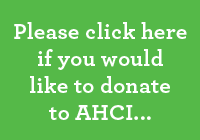What is AHC?

Alternating Hemiplegia of Childhood (AHC) is a rare neurological disorder which affects
approximately one in every one million children worldwide. Children affected by AHC suffer
repeated attacks of hemiplegia (paralysis) that can affect one or both sides of the body. The
attacks may last for minutes, hours or even days.
AHC Symptoms
Children with AHC exhibit a wide range of symptoms. These include tonic attacks (lack of muscle tone), dystonic posturing (stiffening of muscle tone), ataxia (lack of coordination when performing voluntary movements), nystagmus (fast uncontrollable movements of the eyes that may be side to side, up and down, or rotary), along with other ocular motor abnormalities (eye disorders), developmental delays, and seizures. Some children with AHC develop ‘true seizures’ sometime during the course of their disorder.
Recently, a gene (ATP1A3) was identified as the cause of AHC in 70% of the cases. Much work needs to be done to identify the remaining gene/s and develop effective treatment options. The incidence of AHC is estimated in roughly 1 in 1,000,000 births, however, the true incidence may be higher since the disorder is commonly misdiagnosed due to the lack of awareness about AHC and the variability of its clinical features.
Long-Term Effects
Although the disorder is named “of childhood” those affected by AHC do not grow out of the disorder. The AHC episodes may change and sometimes even decrease in frequency as a child gets older.
Every person with AHC is unique, and they can be mildly or severely affected. However, as children get older developmental problems between episodes become more apparent. These developmental problems may include difficulties in fine and gross motor function, cognitive function, speech and language, and even social interactions.
Some short films about AHC kindly reproduced here courtesy of the AHCF and the AHC International Alliance:
AHC Diagnostic Criteria
1. Onset of symptoms prior to 18 months of age
2. Repeated attacks of hemiplegia that alternate in laterality (meaning that the paralysis alternates from one side of the body to the other)
3. Other paroxysmal disturbances, including tonic or dystonic spells, oculomotor abnormalities and autonomic phenomena, during hemiplegic bouts or in isolation
4. Episodes of bilateral hemiplegia or quadriplegia as generalization of a hemiplegic episode or bilateral from the beginning
5. Relief from symptoms upon sleeping, which may later resume after waking
6. Evidence of developmental delay and neurologic abnormalities that include choreoathetosis (a type of involuntary continuous and flowing movement), dystonia, or ataxia

